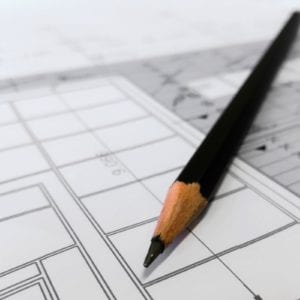
In a field like construction where so much of your time is spent working on a construction site, you might wonder if there’s any value to becoming a student for some of that traditional classroom learning coursework. Is it really worth it to invest your time and money to earn your bachelor’s degree in construction management?
When you consider the doors you will open by taking a construction management degree program and earning your bachelor’s degree, you’ll see that the answer is an easy yes, but it will absolutely take some hard work to achieve. While it is possible to become a Construction Manager by earning your high school diploma and spending a number of years working in the construction trade, a bachelor’s degree is increasingly becoming a requirement for this role.
Today, there are many ways you can earn your Bachelor of Science in Construction Management that have made the degree much more attractive to those already working in, or considering entering the industry. In fact, according to the National Student Clearinghouse Research Center construction trades are rapidly growing in popularity, having the largest percentage increase in enrollment between spring 2016 and spring 2017 at 26.4 percent.
But where do you even begin? Let’s take a look at how you can earn your bachelor’s degree in construction management.
What’s Required To Apply For The Degree Program?
If you decide you would like to pursue a bachelor’s in construction management, you will need to do your homework to figure out what you need to do before you can enroll. Since each individual program may have different requirements, you will have to look into the requirements for each school. To apply for some, you may need to have a combination of a high school diploma and work experience, while others may only require high school graduation and qualifying SAT/ACT scores.
And all is not lost for those who didn’t earn their diploma: If you are currently working in the field, you can sometimes leverage your work experience to enter an undergraduate degree program. Some schools may require an entrance exam to see if you qualify for the undergraduate program placement. You can sometimes also utilize letters of recommendation to generate good favor from admissions.
Find The Right Construction Management Bachelor’s Degree Program For Your Needs
There are many things to consider when choosing which college or university to attend to earn your bachelor’s degree in construction management.
The first should be whether the academic curriculum and coursework has everything you are looking for. If you’re looking to enter a specific niche of the construction discipline such as commercial building, construction engineering technology, construction safety, civil engineering, or even business administration, make sure the higher education institution you are looking at has courses focusing in this area.
But choosing the right school goes far beyond just the right educational curriculum and coursework. You’ll want a school that suits your learning style as well. Do you perform well in large group lectures, small courses, or learning independently online? Will a large school overwhelm you? How will you be able to excel in receiving your bachelor’s degree in as rewarding a way possible?
Location will also be a factor. Do you have work and family obligations that would necessitate finding a school that is nearby or offers night classes?
You can even go a step further and look into the additional program requirements. For instance, does the program require an internship? Will you be doing any hands-on learning or working in the field? Does the program have accreditation status or industry connections and a good track record of job placement?
There are many factors to consider, but you need to consider them all to find a construction education program that will fit your busy life and set you up for success, rather than taking on too much and wasting your time.
Attending Traditional College Or University
The more traditional route to take is to enroll in a four-year bachelor’s degree program at a construction management college or university. This will involve learning in the classroom at the school you’ve chosen that suits your needs. You’ll take all of your courses on campus and may have to do an internship or apprenticeship with a construction company in your community. Some schools will set these up for you while in others you will have to apply for internships at construction companies on your own.
Though attending college or university in person is the more traditional route, new learning options have emerged that are likely much more affordable and flexible for your schedule, especially if you are someone who is working full time in the construction industry and wants to get ahead by moving up to a management position by attaining your bachelor’s degree.
What You’ll Learn In Your Construction Management Bachelor’s Degree Program
Construction management involves much more than just managing your team of construction workers. A construction manager must also know how to manage a budget, organize and supervise the project work from beginning to end, understand building codes, blueprints, legal issues, surveying, construction methods and construction materials, differing construction techniques, mechanical systems, and will probably need some skill with field-specific computer applications. Therefore, the coursework in a construction management bachelor’s degree program will focus on the business, technical, and legal aspects of construction and the construction process.
Courses in business may include economics, cost estimating and analysis, statistics, and financial accounting. Legal courses might include ethics, construction law, and safety. And technical courses may include construction technology and software and surveying layout.
You’ll learn the construction process from a business perspective. This will give you the managerial skills you need to be able to manage a building construction project as well as construction professional employees, contractors, and subcontractors. Beyond your workers, you’ll also need to know how to manage a budget, schedule, quality, and safety on your work site.
Construction management bachelor’s degree program graduates will enter the workplace with knowledge on how to analyze structural systems, use computer applications to solve engineering issues and will be able to apply field inspection techniques.
At NewSchool of Architecture & Design, potential courses may include Construction Contracts and Documents, in which students will gain an understanding of many different types of construction documents, which will likely include contracts, subcontracts, bidding forms, and bonds. This will give the students knowledge in situations of dispute resolution, wage rates, the legality of bidding, liability, tax exempt status, and even warranties.
In Construction Project Planning, construction management students will learn how to schedule and plan the entire construction process, including how to utilize construction material time schedules, computer scheduling packages, critical path methods, and more. Construction Estimating is another course commonly associated with a construction management degree. This will focus on the bidding and estimating costs of a construction project, including overhead, unit costs, takeoff estimates, and cost control systems.
Naturally, Project Management will be a prominent feature of any construction management bachelor’s degree curriculum. Here, students will learn strategic planning and project staffing, as well as techniques and tools for project management, cost control, risk management, and the software you will use.
While each construction management program will be different, they will all involve some reading and research assignments, as well as individual and group projects, plus exams, including open-book and open-note exams, and some interactive, hands-on learning. The programs with internships will best prepare you for the workplace by giving you actual experience in the field, allowing you to apply the skills you’ve learned in the classroom to real projects with real professional organizations.
What Are The Requirements Of A Construction Management Bachelor’s Degree Program?
Earning your Bachelor of Science in Construction Management degree will typically involve a mix of learning about construction technologies, project management, contracts, estimating, specifications, quality assurance, and more. Generally, a bachelor’s degree program will require you to earn somewhere between 120 and 180 credit hours. You will also have to complete all of the major and prerequisite courses involved in the program, and maintain a cumulative GPA above 2.0. Depending on the program, you may also need to take on an internship or apprenticeship role with a local construction company.
If you want to specialize in a certain niche, you can often choose to study in this specific area at some point during your program. For instance, if you want to specialize in residential construction, your course load can focus on this specific portion of construction management. Other areas of expertise include commercial construction, highway and heavy civil works, and facility management.
Potential Construction Management Career Paths
Earning your bachelor’s degree puts you in the best position to earn a construction management job, but there are other popular career opportunities in this field including General Contractor, Cost Estimator, Facilities Engineer, Construction Supervisor, Superintendent, and Construction or Building Inspector. Construction management graduates may therefore have a variety of employers, including architectural firms, building contractors, engineering firms, and specialty trade contractors. Some construction management graduates may even decide to start their own business.
Each profession currently is forecasted for good job growth in the coming years, and all have a high earning potential, especially if you come with a diploma in a construction degree program. A high school diploma and on-the-job training and possibly a certification may be all you need to get started, but more and more construction managers are earning their bachelor’s degree, so earning yours will make you more competitive on the construction industry job market.
Earning your bachelor’s degree in construction management shows that you have the management skills and business knowledge needed to perform well in the industry and be a valuable asset to a construction company, and even more so with a master’s degree. It shows that you’ll be someone who can consistently manage a team and work together to get a job done properly, on time.
Whatever higher education path you choose, the draw of the construction management field is currently quite strong. The U.S. Bureau of Labor Statistics (BLS) forecasts that employment in the industry will grow at a rate of 11 percent from 2016 to 2026. The BLS also shows that construction managers in the U.S. earned a yearly median salary of $89,300 in 2016, showing this to be a profession with great earning potential. Having a bachelor’s degree in construction management puts those people in a position for a higher salary, and those interested in even more can go back to school to pursue a Master’s in Construction Management online.
Apply To Your Construction Management Bachelor’s Degree Program Of Choice
If you’ve found the program that is the right fit for your availability and needs, and you fit the requirements, apply and once accepted, get ready to start the road toward a rewarding career.
Call NewSchool today to learn more about our undergraduate construction management program and how we can help you achieve your academic goals!

 619-684-8800
619-684-8800







